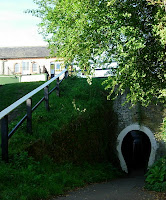A Boat Too Far?The
Ross Tiger was the first of the Cat class trawlers to be built for Ross Fisheries.

The twelve boats were :
Ross Tiger, February 1957
Ross Leopard, October 1957
Ross Jaguar, December 1957
Ross Panther, April 1958
Ross Cougar, April 1958
Ross Cheetah, November 1959
Ross Lynx, February 1960
Ross Jackal, April 1960
Ross Puma, August 1960
Ross Genet, October 1960
Ross Civet, October 1960
Ross
Zebra, !?!? November 1960
After her retirement she was given to N.E.Lincs Council for £1 and is moored in Alexandra Dock, Grimsby next to the Fishing Museum.
Guided tours are given by ex-trawler men who worked on the ship so are entertaining as well as informative.
A little further along the dock
Lincoln Castle is being broken up due, in part, to the local authority's attitude regarding possible preservation. The owner has decided to sell it for scrap. To read more about
the unnecessary demise of Lincoln Castle click here.If, like me, this makes you want to go out and kick someone then read on.

Alongside the
Ross Tiger in Grimsby lie the remains of the oldest registered fishing vessel in the world.
Sold at auction on 4 May 1888, this Grimsby sailing smack was launched on 15 June 1888 and named
G.I.C.
With a crew of two men and three boys she fished for the Grimsby Ice Co. Ltd. until April 1896, when she was sold to Great Yarmouth.
In 1902 she was sold to Iceland and renamed ESTHER. Twenty years later she was sold on to the Faeroe Islands, where she remained for the next seventy years.
Sold back to Grimsby in 1992, she was incorporated into the historic fishing fleet of the National Fishing Heritage Centre where she now sits and rots. No doubt she will soon share the same fate of
Lincoln Castle.Still not worked up enough? Then read on.

Friends of ours who have lived on their narrowboat on BW moorings for the at least six years have recently given up the mooring. Gordon, Becky and their children have been putting up with the dust and noise created by developers building flats alongside their mooring over the past two years. The flats are now occupied and one of the residents threatened Gordon because
"Ive had three months looking at your boat" There used to be four boats all paying £2000+ p.a. to BW along this stretch of canal.Now there are just morons behind the hedge.
Now go out and kick someone!



















































